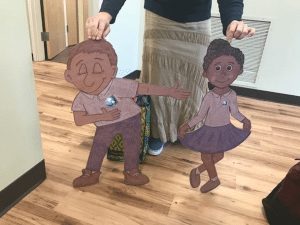Montessori Method -Learning Through False Fatigue
Many people are skeptical when they hear about the three hour morning work cycle involved in the Montessori Method. Children work independently during this time, which is much longer than many people believe a child can focus for.
The unique features of the Montessori method make the three hour work cycle possible. A prepared environment with just right materials keeps children engaged. Montessori teachers teachers also understand the concept of false fatigue.
What is False Fatigue?
False fatigue refers to a loss of focus about one hour into the work cycle. The classroom begins to get louder as the students become distracted or hyper.
Most adults managing a group of children would read this as a good time to end an activity. They also might stop and refocus before continuing. Often, teachers interpret this disconnect from engagement as a clue to end independent work even sooner for the future. This is not done under the Montessori Method.
Maria Montessori discovered something different. Part of her genius was the ability to simply observe children. She did not always feel the need to redirect or interfere when children became restless.
Montessori learned something very valuable by riding out this loss of focus. She discovered that a brief disconnect happened at a predictable period during the work cycle. Further, if the children were left alone, they came out of this period of restlessness and worked with more fervor than ever before.
Why Does False Fatigue Occur?
During the first third of the work cycle, according to Montessori’s observations, most any work engaged the students. They were fresh and ready to explore. After a while, however, boredom set in. The work they chose became less stimulating.
But this was not because they needed adult direction. It was quite the opposite—they needed time and space for self direction. This is where the Montessori Method comes in.
After the initial novelty of getting to work wore off, they needed to find the exact work that they craved intellectually. Dr. Montessori referred to this as their “maximum interest”. And once they found it (assuming a thoughtful teacher had made it available) they could truly reach their full potential.
The Teacher’s Role in Facilitating False Fatigue in the Montessori Method
When the guide is confident that her students have access to work that challenges them just enough, she knows to wait through that short period of unfocused time called false fatigue.
Following a brief disconnect, children actually focus longer and harder than ever before. And they discover the work that is exactly perfect for them at that time.
Interrupting class to redirect the activities or remind students of behavioral expectations can seem like the reasonable response. However, this prevents children from accessing deeper levels of learning and focus. It also trains them to stop focusing when they face moments of restlessness. Letting children work through false fatigue trains them in self reliance, expands their attention span, and teaches them tenacity.
In Montessori’s own words, “If in the period of ‘false fatigue’, at 10 am an inexperienced teacher, interpreting the phenomenon of suspension or preparation for the culminating work as dis-order, intervenes, calling the children to her, and making them rest, etc., their restlessness persists, and the subsequent work is not undertaken.”
This approach in the Montessori Method only works if the children can actually find the work they need. That is why the Montessori guide’s job of observation and careful preparation, as well as a deep understanding of intellectual development, is so vital.
To Learn more about the Montessori Method at Montessori Kids Universe, click here!


